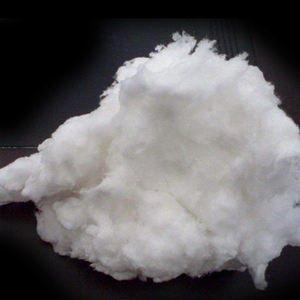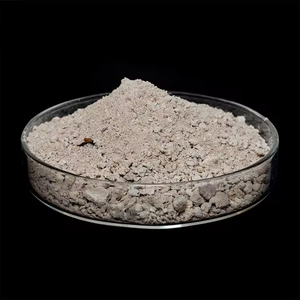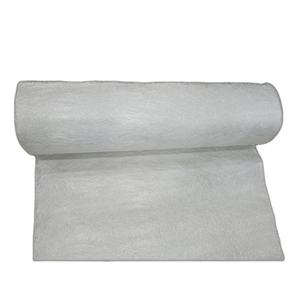Professional industry ceramic supplier, silicon nitride, silicon carbide, aluminum nitride and any other kinds of ceramics.
PRODUCT PARAMETERS
Description
Overview of High-temperature insulation ceramic fiber sheets, ceramic wool s.
High-temperature insulation ceramic fiber sheets, ceramic wool s. is a lightweight, high-temperature insulation material composed primarily of alumina-silica. It is manufactured through a melting and spinning or blowing process, resulting in a flexible, wool-like textile. This material is engineered to provide exceptional thermal management, conserving energy and protecting equipment in extreme temperature environments across various industries.
Features of High-temperature insulation ceramic fiber sheets, ceramic wool s.
-
Excellent Thermal Stability: Withstands continuous operating temperatures up to 1260°C (2300°F) and higher for certain grades, with minimal shrinkage.
-
Low Thermal Conductivity: Provides highly efficient insulation, reducing heat loss and improving energy efficiency.
-
Lightweight & Low Heat Storage: Offers low thermal mass, enabling rapid heat-up and cool-down cycles for improved process control and energy savings.
-
Thermal Shock Resistance: Highly resistant to damage from rapid temperature changes.
-
Excellent Flexibility & Resilience: Can be fabricated into blankets, boards, papers, and textiles to fit complex shapes and applications.
-
Good Chemical Stability: Resists attack from most corrosive agents, except strong alkalis and hydrofluoric acid.
Specification of High-temperature insulation ceramic fiber sheets, ceramic wool s.
High-temperature insulation ceramic fiber sheets handle serious heat. They resist temperatures up to 1260°C (2300°F). This makes them perfect for furnaces, kilns, boilers, and pipes. The material is mostly alumina and silica. These fibers are spun into a wool-like blanket. Then it gets compressed into flat, manageable sheets.
You find these sheets in different thicknesses. Common sizes are 3mm, 6mm, 12mm, 25mm, and 50mm. They also come in various densities. Density options range from about 128 kg/m³ to 320 kg/m³. A denser sheet is stronger. A denser sheet also resists damage better. But it costs a bit more. A lighter sheet is cheaper. It offers good insulation too.
These sheets are very flexible. You can bend them easily. You can cut them with a knife or scissors. This makes fitting them simple. They fit around pipes and complex shapes well. They fill gaps effectively. This flexibility helps during installation. It saves time and effort.
Thermal performance is key. These sheets stop heat moving efficiently. Their thermal conductivity is low. It stays low even at high temperatures. This means excellent insulation. You get energy savings. You protect surrounding areas from heat damage. The material is chemically stable. It resists most acids and alkalis. It won’t corrode easily. It handles thermal shock well. Rapid temperature changes don’t crack it.
Ceramic fiber sheets are lightweight. They add little extra weight to structures. This is important for large equipment. Handling them is straightforward. They install quickly. You can layer them for thicker insulation. You secure them with pins, washers, or adhesive. You compress them slightly for the best seal. They offer reliable, long-lasting heat protection.
Applications of High-temperature insulation ceramic fiber sheets, ceramic wool s.
High-temperature insulation ceramic fiber sheets serve many industrial purposes. These sheets handle extreme heat well. They keep heat inside furnaces effectively. This saves energy. It lowers operating costs too. Furnace linings often use them. Kilns in ceramics and metal foundries rely on them. Boiler insulation benefits greatly. They cover hot surfaces safely.
Power plants need reliable high-temperature insulation. Ceramic fiber sheets fit perfectly here. They insulate steam pipes and exhaust systems. This prevents dangerous heat loss. Workers stay safer near hot equipment. Petrochemical plants use them widely. They line reactors and catalytic crackers. The sheets withstand harsh chemical environments. They don’t degrade easily.
Manufacturing depends on consistent heat control. Ceramic wool sheets provide that consistency. They form tight seals around furnace doors. They plug gaps in insulation layers. This stops heat leaks. Process temperatures stay stable. Product quality improves. Fuel consumption drops.
Fire safety is critical. Ceramic fiber sheets offer excellent fire protection. They don’t burn. They act as strong fire barriers. Buildings use them in fire doors and walls. Industrial settings install them near sparks or flames. They protect vital structures. They prevent fires from spreading. Electrical cabinets get lined with them. This guards against overheating wires.
Company Profile
Tanki New Materials Co.Ltd. focus on the research and development, production and sales of ceramic products, serving the electronics, ceramics, chemical and other industries. Since its establishment in 2015, the company has been committed to providing customers with the best products and services, and has become a leader in the industry through continuous technological innovation and strict quality management.
Our products includes but not limited to Aerogel, Aluminum Nitride, Aluminum Oxide, Boron Carbide, Boron Nitride, Ceramic Crucible, Ceramic Fiber, Quartz Product, Refractory Material, Silicon Carbide, Silicon Nitride, ect. please feel free to contact us.

Payment Methods
T/T, Western Union, Paypal, Credit Card etc.
Shipment Methods
By air, by sea, by express, as customers request.
5 FAQs of High-temperature insulation ceramic fiber sheets, ceramic wool s.
What temperatures can ceramic fiber sheets handle?
Ceramic fiber sheets resist heat up to 1260°C (2300°F). This makes them suitable for extremely hot environments like furnaces, kilns, and boilers. They keep heat in effectively.
Are these sheets safe to handle?
Yes, they are safe. The fibers are bonded during manufacturing. This prevents loose fibers from becoming airborne. Always wear gloves when handling. The surface can feel slightly prickly.
How do you install them?
Installation is straightforward. Cut the sheet to size using sharp scissors or a utility knife. Fit it against the hot surface. Secure it using metal clips, pins, or high-temperature adhesive. Ensure a snug fit for best insulation.
What thickness should I choose?
Thickness depends on your heat level and insulation needs. Higher temperatures generally require thicker sheets. Common thicknesses are 12mm (1/2″), 25mm (1″), and 50mm (2″). Check your equipment’s specific requirements.
How long do they last?
They last a long time under continuous high heat. Their lifespan depends on the exact temperature and physical stress. Avoid direct flame impingement and heavy abrasion. They resist thermal shock well. They won’t crack like rigid materials.
REQUEST A QUOTE
RELATED PRODUCTS

Ceramic Fiber Foil for Burner Furnaces, 128 kg/m³ Biosoluble Insulation Ceramic Fiber Blanket

Heat-Resistant Vacuum-Formed Ceramic Fiber Products.

Factory-made fireproof ceramic Wide, high-temperature resistant ceramic fiber

1mm, 2mm, 3mm, 4mm, 5mm thickness, modern 1260 fireproof Ceramic Fiber wool paper

Insulating bulk ceramic fiber or biosoluble fiber for various ceramic fiber products.



